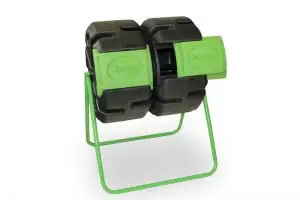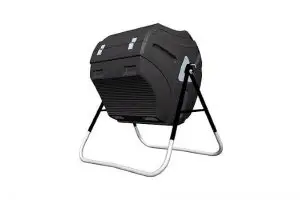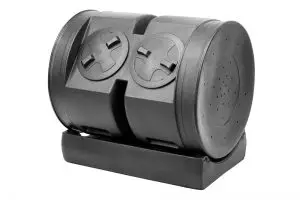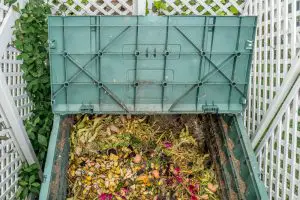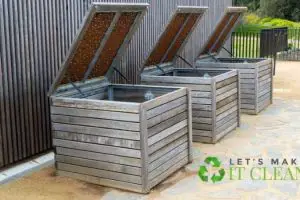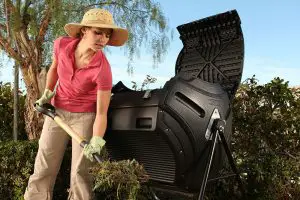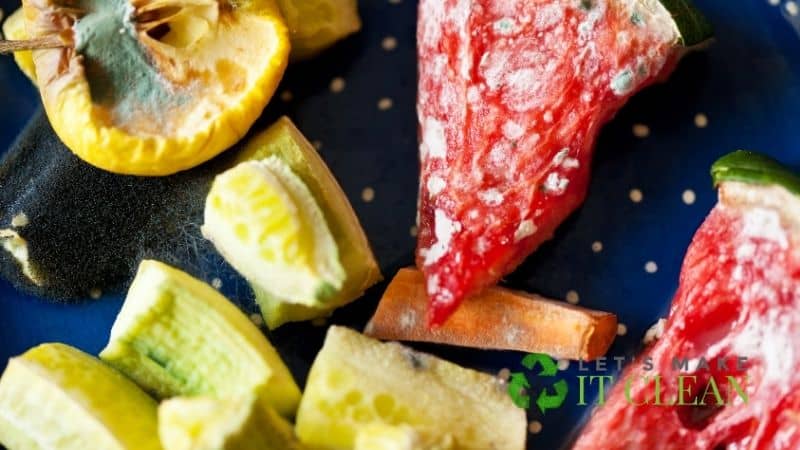Good tea can help you start the day on a good foot. What’s your favorite tea? In the same way, plants and vegetations need good compost tea to blossom.
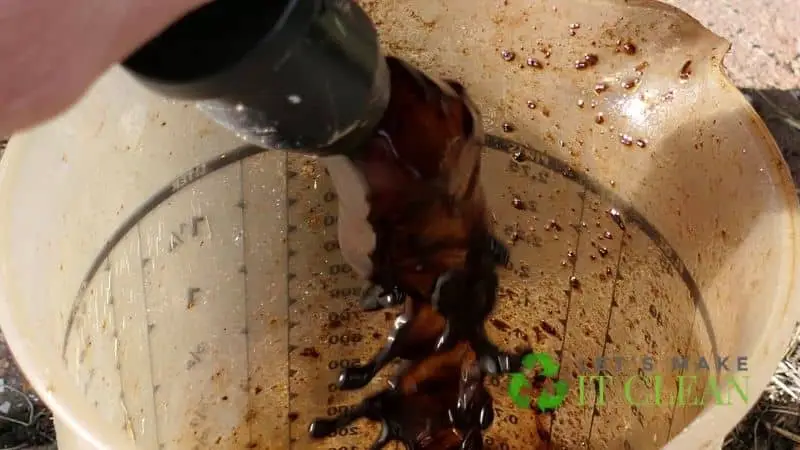
Compost tea is a liquid fertilizer that you make by filtering a finished compost that you made or bought. Why a compost tea and not the compost itself?
Quick Navigation
- Things You Need for the Compost Tea
- How to Make Compost Tea
- 1. Aerate the Water
- 2. Placing the Aerator
- 3. Attaching the Pump
- 4. Filling Bucket With Compost
- 5. Add Water to Your Bucket
- 6. Add Molasses
- 7. Switch on Your Pump
- 8. Steep Your Compost Tea
- 9. Daily Stirring
- 10. Strain the Compost Tea
- 11. Return the Compost to the Original Pile
- 12. Using Your Compost Tea
- 13. Soak Your Garden’s Soil With the Compost Tea
- 14. Use a Spray Bottle
- 15. Tea Application
- Video: Make Compost Tea. Quick, Easy, and Free
- Conclusion
Have you heard of spray fertilizers, the inorganic ones, which have a lot of chemicals? It’s the same concept, but, in this case, this is organic, which makes your vegetable and plant very healthy, and still, you can conserve the environment at the same time.
So how do you come up with one for yourself? In this article, you will learn all the steps to make your organic compost tea that will greatly help your vegetable, flowers, and all the plants you spray.
Things You Need for the Compost Tea
Before you start making the compost tea, you will need to ensure you have all the ingredients you need to avoid rushing to the store in the middle of the process.
After getting all you need, it’s easy to go on with the process. Below are the things you need:
Water-rich in Microbes
The first step is to make sure you have the right water. The water you use must be rich with microbes as they are needed in the process.
In this process, avoid the cleanest water because in the process of cleaning the water, microorganisms were killed, and they are exactly what is needed.
Research done shows that the best water is water from the pond or other natural water sources like the river and dams. Rainwater is not bad, but if you have a natural water source, use it instead; it contains more microbes.
Water from the well is also good for the process. By all means, avoid the “city water” that contains chlorine as the chlorine in the water kills all the organisms.
At times you can bubble the chlorine out by aerating. But in this case, it depends on the chlorine used as some can’t be bubbled out.
Get Quality Compost
The trick to making quality compost tea is quality compost. Now the question remains, what exactly is quality compost?
First, it’s good to note the manure from animals feeding weed seed and hay might contain herbicide that is toxic to the compost. Apart from that, you have to ensure the finished compost is fully broken down.
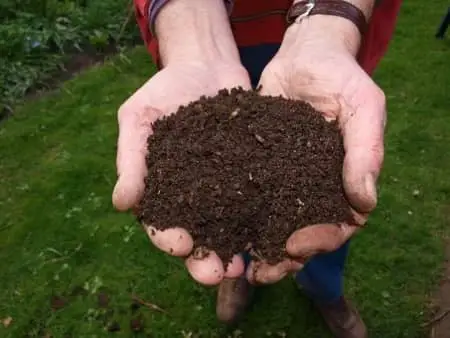
Experts don’t recommend commercial compost as, in most cases, it is not fully finished. In this case, they recommend the vermiculture system with worm casting as it is reliable.
The compost you choose to use must complete all the nutrient levels. When the compost has all the nutrient levels, use a cup in a whole 5gallon bucket of water that covers a ¼ acre.
Related: Top 5 compost tumbler reviews
Compost Tea Bucket
The other thing you need for the process is the compost bucket. In this case, you can choose between a 3-gallon bucket or a 5-gallon bucket.
The buckets are used to dilute the compost before applying it to the garden. To ensure the brew is well concentrated, you need small gallon buckets.
Gauze Bag
You want to make work easy for you, so ensure you use a gauze bag to hold the compost material, which will ensure the materials don’t block the pump, and at the same time, it will be easy for you to change the composting materials.
Aeration Pump
An aeration pump is needed to make compost liquid to allow the bacterial process and help in the composting material process.
Alternatively, you can use an aquarium pump with pipeworks. This whole process will need a power source supply.
Air Stone
You can choose to use an air stone or not. It helps in ensuring there is perfect airflow in the brewing process.
When choosing an airstone, consider the one that won’t clog the system as there are air stones that produce small particles that interfere with the liquid when it brews.
Drainage Tap
For this one, it is optional, but it helps in making your work easy. This is the tap you use to pour out the compost tea once it reaches the right level of concentration into the gallon buckets to dilute, especially if you are planning to repeat the brewing process regularly.
How to Make Compost Tea
1. Aerate the Water
The first step in making compost tea is to remove chlorine from the tap water. In this case, you need 3 gallons of water, which are 11 liters in the tea-making process.
Leave the water under the sun in the fresh air to break down the water’s chlorine. If the water you are using is from a natural source like the pond or a well, there is no need to aerate.
2. Placing the Aerator
The second step is placing the aerating pump at the bottom of a large bucket. Here you will need a 5-gallon plastic bucket, which has 19 liters capacity. The aerator should be at the bottom of that bucket.
3. Attaching the Pump
Attach an external pump that will help in making sure the tea keeps moving when it brews. The external pump prevents the tea from becoming anaerobic, as that kind of mixture is not good for the plants.
The pump is attached at one end of the flexible tube all the way to the aerator on the bottom. The other side of the tube should be attached to the pump outside the bucket.
From there, you can choose to leave the pump on the ground right beside the tea or clip it on the bucket. All you need to ensure is there is no excess water that runs back in the pump.
4. Filling Bucket With Compost
The next step to making your tea is filling the gallon bucket with finished compost. The compost should be filled less than halfway and should not touch down. In this case, use a gauze bag as it will help in holding it in position. Ensure the compost is loose to ensure the aerator works.
5. Add Water to Your Bucket
Once you have completed the above steps, you now need to add water to the half-empty bucket. Form a complete mixture by adding water to the other half of the compost bucket. However, you must make sure that you leave an allowance that will let you stir.
This headroom helps you avoid wastage by spilling as you stir your mixture. Most gardeners prefer leaving an allowance of about three inches.
6. Add Molasses
Compost tea requires one ounce of molasses in a 5-gallon bucket. Once you have added the whole use to your mixture, stir to allow absorption.
This molasses becomes a food source for the microorganisms in your soil. With a rich source of food, the soil’s bacteria will multiply, consequently improving your production quality.
Moreover, it would be best if you use molasses that doesn’t contain sulfur. If you use sulfured molasses, you risk killing the much-needed soil bacteria.
Additionally, your stirring should be comprehensive to ensure all the bucket ingredients are fully combined to form compost tea.
7. Switch on Your Pump
The mixture you have made so far needs oxygen. For this reason, you have to plug your pump into a power source. The next step is turning the pump on, allowing it to send air to the aerator.
The aerator is located at the bottom of the bucket, which supplies sufficient air to your tea.
8. Steep Your Compost Tea
Allow your compost tea to soak for a maximum of three days. The steeping duration can be two days depending on the desired results and the environment you have prepared for steeping.
Your compost tea will be sufficiently brewed after thirty-six to forty-eight hours.
Adding 24 more hours after the first two days of steeping will facilitate the multiplication of microbes. However, if you increase the steeping time to more than three days, you will starve the microbes. They will, therefore, not function optimally, meaning your tea will not be as nutritious as needed.
9. Daily Stirring
The microorganisms in your compost tea need to be evenly spread for them to work on all parts of the compost tea. Consequently, you must stir the compost, water, and molasses mixture every day.
If you skip stirring for a day, you risk having compost material that sinks to the bottom of the bucket.
10. Strain the Compost Tea
Once your compost tea has completed the brewing process, switch your pump off, and strain the tea. The first step in this stage is removing the tubing you had placed in the bucket. Second, remove the aerator.
Straining the compost tea requires you have another 5-gallon bucket, a considerably big cheesecloth, and a burlap sack.
Now transfer the content of the first bucket to the second bucket. Ensure that all ingredients used to prepare the homemade compost tea are wrapped with a cloth.
The next step is pulling your compost out of the bucket leaving only water in the bucket then squeezing the sack.
11. Return the Compost to the Original Pile
After squeezing out all the compost tea, return the dry compost to the pile for future utilization. You will remain with compost tea that is ready to use in your garden.
Use a shovel to mix the pile in the original compost heap. Similarly, you can add the used compost to the solid in your garden directly.
12. Using Your Compost Tea
Your carefully made compost tea needs to be used within the first 36 hours. This is because tea organisms don’t have the capacity to survive for more than a few days.
The microbes’ short lifespan dictates that they must be utilized while the compost tea is still fresh.
13. Soak Your Garden’s Soil With the Compost Tea
Healthy plants demand the use of nutrient-rich fertilizers. Your compost tea is one of these fertilizers necessary in growing healthy plants. Gardeners have the option of soaking the garden soil with the compost tea directly.
Use a watering can of your preferred size according to your garden’s size to soak the compost in the soil.
14. Use a Spray Bottle
Besides using a can to apply the tea to your soil, you can choose the foliar spray alternative. The first thing you need to do is put the tea in a spray bottle, which serves as a foliar spray.
The tea, in this case, will be applied to the leaves of your plants. For this reason, extremely dark compost tea needs to be diluted.
Therefore, add water to the tea and balance the ratio of the compost tea and the added water.
15. Tea Application
In this stage, gardeners add 0.6 millimeters of vegetable oil to the mixture. The essence of adding the vegetable oil is facilitating the easy sticking of the compost tea on the leaves of your plants.
Proper shaking is done to allow compatibility. The prime time of his application is in the early mornings.
If you prefer evenings, it would be best to apply the mixture on the leaves of your plants in the late evenings. This timing helps avoid direct exposure to the harsh midday sunlight.
If you don’t want to damage your delicate plants, dilute the tea you intend to apply to their leaves. Similarly, young plants should receive dilute compost tea.
Video: Make Compost Tea. Quick, Easy, and Free
Conclusion
With the information above, making compost tea is easy and will save you a lot and leave your plants looking all healthy, leading to more production.
All you need to do is ensure you follow the recipe to the letter to get quality tea. Also, ensure the compost you use is fully decomposed to come up with the best quality tea.

